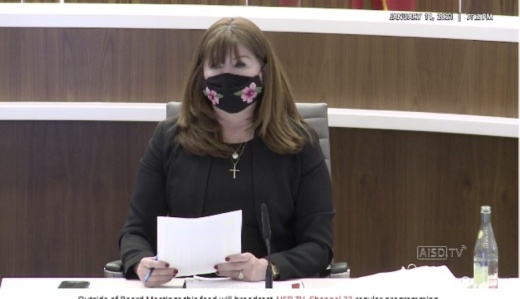The announcement came one week after AISD trustees signed a resolution asking state leaders to release the federal stimulus funds that were intended for public schools.
“We are certainly grateful to our governor and the Texas Education Agency, who heard our call to distribute the COVID-19 relief funds that Congress had originally appropriated specifically for public schools,” AISD Superintendent Stephanie Elizalde said during a media availability April 29. “This is certainly very good news for Austin schools and our students, and it will certainly go a long way in helping us to fulfill our mission to educate every child, every day.”
Elizalde said the $156 million is about $10 million less than what the district was expecting, but it will nonetheless help support students. She said the district does not yet know when the funds will be made available.
Some of the money will go to recouping the almost $55 million AISD has already spent on COVID-19 relief, she said, including personal protective equipment, Plexiglas barriers and technology purchases for virtual learning.
Beyond that, Elizalde said there will be a primary focus on direct services to students that could help eliminate learning losses that were seen during the pandemic. What those services are, specifically, will be developed as the district gathers public feedback. She said public engagement opportunities could begin in the next two weeks.
“We really need to look at our data, both quantitative and qualitative, and create a true plan that's responsive and that would be focused on student outcomes [and] direct services to students,” she said. “At the end, this really needs to be a student-centered needs assessment.”
Some future costs, such as maintaining technology that was distributed over the past year, are already anticipated by the district, Elizalde said. She also anticipates future spending on professional development, mental health services, and possible summer programs that could help students most severely impacted by the pandemic, she said.





